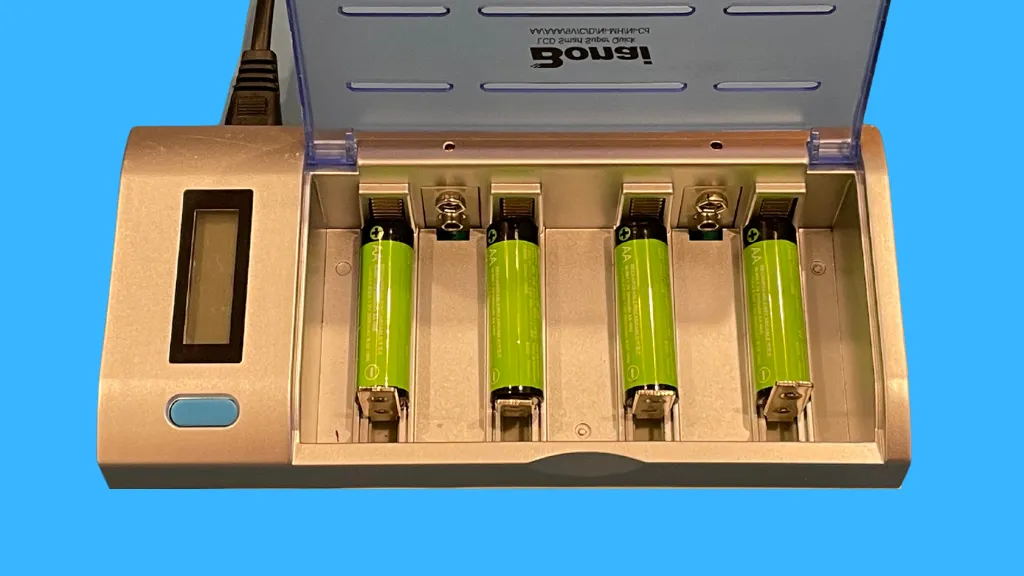How to Test AA Battery With Multimeter
Testing the health and performance of AA batteries is crucial, especially in devices critical for daily use. A multimeter, a versatile tool in electronics, is perfect for this job.
This article will guide you through testing AA batteries using a multimeter, ensuring you can assess their condition accurately.
What is a Multimeter?
A multimeter is a multifunctional electronic instrument that consolidates various measurement tasks into one unit, typically capable of measuring voltage, current, and resistance.
There are two main types of multimeters: analog and digital, with digital ones being more prevalent in modern usage due to their ease of reading and accuracy.
Why Test AA Batteries?
AA batteries are common in many household devices, and their failure can be inconvenient. Testing these batteries helps determine whether they need to be replaced or recharged, thus avoiding the frustration of suddenly finding your device out of power.
How to Test AA Battery With Multimeter
Tools Needed
Step 1: Setting Up Your Multimeter
Before you begin testing your AA battery, setting up your multimeter properly is crucial. This step is fundamental as it ensures accurate readings and prevents potential multimeter or battery damage.
Here’s how to do it:
Selecting the Right Function on the Multimeter
- Choose the DC Voltage Setting: Since AA batteries are a direct current (DC) source, you must set your multimeter to measure DC voltage. Look for a symbol that resembles a solid line with a dashed line beneath it, often denoted as ‘VDC.’
- Adjusting the Voltage Range: If your multimeter isn’t auto-ranging, set it to a range measuring up to 2 volts. This is because a standard AA battery has a nominal voltage of 1.5 volts, and you want to ensure the range covers this value.
Connecting the Probes
- Insert the Probes Correctly: Plug the red probe into the port labeled ‘VΩmA’ or similar, and the black probe into the port labeled ‘COM’ (common). This setup is standard for most multimeters.
- Inspect the Probes: Before proceeding, inspect the condition of the probes. Ensure they are not damaged or frayed, as this could affect the accuracy of your readings or pose a safety risk.
Understanding Multimeter Probes
- Red Probe is Positive: The red probe measures the positive side of the circuit or component. In the case of an AA battery, this would be the positive terminal (usually marked with a ‘+’ sign).
- Black Probe is Negative: The black probe is for the negative side, which will be the battery’s negative terminal (usually marked with a ‘-‘ sign).
Step 2: Testing Voltage of the AA Battery
Testing the voltage of an AA battery is a straightforward process but requires attention to detail for accurate results. Here’s how to do it:
Equipment Setup
- Ensure your multimeter is set to measure DC voltage. This is usually indicated by a ‘V’ with a straight line, representing DC (Direct Current).
- Connect the red probe to the port on the multimeter typically labeled ‘VΩmA,’ and the black probe to the ‘COM’ port.

Performing the Test
- Start by holding the AA battery you want to test. Identify the positive (+) and negative (-) terminals, usually clearly marked on the battery.
- Place the red probe on the positive terminal of the battery. This terminal is typically the one with a raised nub.
- Place the black probe on the battery’s negative terminal, which is flat and opposite the positive terminal.
- Apply gentle pressure to ensure good contact between the probes and the battery terminals.
Reading the Voltage
- Once the probes are correctly placed, the multimeter will display a reading. For a standard AA battery, the voltage should be around 1.5 volts when fully charged.
- A 1.5 volts or slightly above indicates a healthy, fully charged battery.
- If the reading is between 1.3 and 1.5 volts, the battery is partially charged and still usable but may not perform at its best.
- A reading below 1.3 volts suggests the battery is weak or nearly depleted. In this case, the battery may not be able to power your device effectively and should be replaced or recharged if it’s a rechargeable type.
- The full charge voltage might differ slightly for rechargeable AA batteries, typically around 1.2 volts. Therefore, a reading close to this value indicates a fully charged rechargeable AA battery.
Factors Affecting Accuracy
- Ensure that the battery and the probes are clean. Dirt or corrosion can affect the conductivity and, thus, the accuracy of your reading.
- The battery temperature can also affect the reading. A cold battery might show a lower voltage than its actual charge.
- If the multimeter reading is unstable, check the connections again and ensure the probes are firmly in contact with the battery terminals.
Step 3: Testing Battery Capacity (Optional)
Testing the capacity of an AA battery is a more advanced procedure than a simple voltage test. It involves assessing how much charge the battery can hold, which indicates its overall health and longevity.
Here’s how to perform this test:
Understanding Battery Capacity
- Battery capacity is measured in milliampere-hours (mAh). It represents the charge a battery can deliver at a specific voltage over time.
- For AA batteries, typical capacities range from about 1700 to 3000 mAh for alkaline batteries and up to 2800 mAh for rechargeable NiMH batteries.
Equipment and Setup
- To test battery capacity, you need a multimeter that measures current in milliamperes (mA) and a known resistance load (like a resistor or a small bulb).
- Connect the resistor or bulb in series with the battery and the multimeter. This means you’ll connect one end of the resistor to the battery’s positive terminal and the other to the multimeter’s red probe. Then, connect the multimeter’s black probe to the battery’s negative terminal.
Performing the Capacity Test
- Set your multimeter to measure current (mA). Be mindful of the maximum current rating of your multimeter to avoid damaging it.
- Once everything is connected, the current flowing through the circuit will be displayed on the multimeter. This is the discharge current of the battery.
- To calculate the capacity, you must know how long the battery can maintain this discharge current. This test should be conducted for a precise measurement until the battery is fully discharged, which can take several hours.
- Record the current reading and the time it takes for the battery to discharge completely. The capacity is calculated by multiplying the current (in mA) by the discharge time (in hours).
Interpreting the Results
- Compare the calculated capacity with the rated capacity of the battery. A significant drop in capacity indicates that the battery is nearing the end of its useful life.
- For rechargeable batteries, a capacity test can help determine whether they still hold a charge efficiently or need replacing.

Safety and Accuracy
- Ensure the resistor or load can handle the discharge current without overheating.
- Monitor the battery temperature during the test. Overheating can be a sign of a faulty battery.
- Remember that this test discharges the battery completely, which might only be suitable for some battery types, especially non-rechargeable ones.
Step 4: Interpreting the Results
After measuring the voltage of an AA battery using a multimeter, the next crucial step is to interpret the results accurately. This step is essential to understand the battery’s condition and make informed decisions about its use or replacement.
Understanding Voltage Readings
- Fully Charged Battery: A reading equal to or slightly above the battery’s rated voltage (typically 1.5V for non-rechargeable AA batteries and 1.2V for rechargeable ones) indicates that the battery is fully charged and in good condition.
- Partially Charged Battery: A reading between 1.3V and 1.5V for non-rechargeable batteries or between 1.0V and 1.2V for rechargeable batteries suggests that the battery is partially charged. While it may still power devices, its performance might need to be improved.
- Weak or Depleted Battery: A reading below 1.3V for non-rechargeable batteries or below 1.0V for rechargeable batteries usually means the battery is weak or nearly depleted. Such batteries are unlikely to function effectively and should be replaced or recharged.
Factors Affecting Battery Performance
- Battery Age: Older batteries tend to lose their ability to hold a charge over time. Even if they show a full voltage, their capacity to deliver power might be reduced.
- Usage Patterns: Frequent use and the type of devices the batteries use can affect their lifespan and performance.
- Storage Conditions: Batteries stored in extreme temperatures or for extended periods without use can show reduced performance.
Making Decisions Based on the Results
- Replace or Recharge: If the battery is weak or depleted, consider replacing it or recharging it if it’s a rechargeable type.
- Further Testing: If the battery shows a full charge but doesn’t power devices effectively, it might be worth testing its capacity or internal resistance if your multimeter has these functions.
- Preventive Measures: Regular testing of batteries, especially before important uses, can prevent inconveniences and ensure device reliability.
Additional Considerations
- Safety: Always handle batteries and multimeters carefully to avoid short circuits or damage.
- Environmental Impact: Properly dispose of depleted batteries, especially rechargeable ones, as they contain materials that can harm the environment.
Conclusion
Regular testing of AA batteries with a multimeter is a simple yet effective way to ensure your devices function reliably. With this guide, you can easily check the health of your batteries and take appropriate action when necessary.
Frequently Asked Questions
How often should I test my AA batteries?
It’s a good practice to test your batteries before inserting them into an important device, especially if they have been in storage for a while.
Can I test rechargeable AA batteries the same way?
Yes, the testing procedure for rechargeable AA batteries is the same, though their full charge voltage might be different.
What does a fluctuating reading on the multimeter indicate?
A fluctuating reading could indicate a poor connection between the probes and the battery terminals or an issue with the battery itself.

Author
Alex Klein is an electrical engineer with more than 15 years of expertise. He is the host of the Electro University YouTube channel, which has thousands of subscribers.
